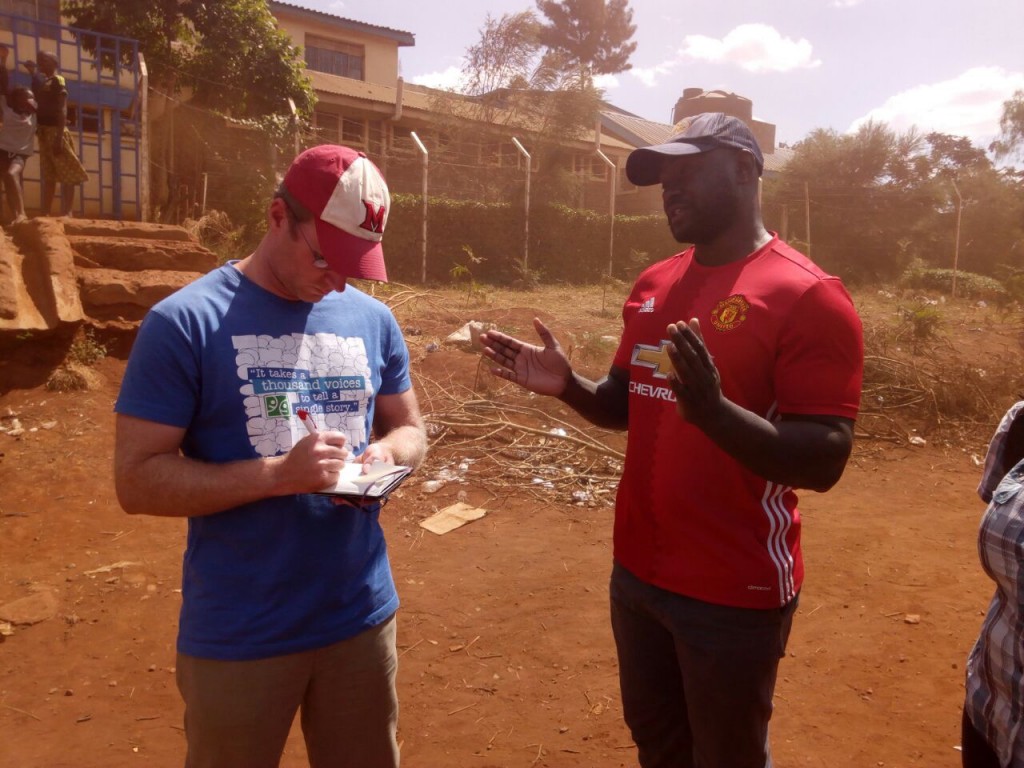Fake News Even Worse in Developing Countries

(Me reporting in Nairobi)
I was in Kenya for the election in August.
The day of the election and for a few days after, most places were closed and most people were holed up in their homes watching the election play out on the news and on social media.
The network news only reported on the results and the leaders’ opinions of those results. One candidate said that it was rigged and mishandled. The supreme court later agreed with him.
Meanwhile, friends who lived in slum communities across Nairobi were sending me pictures via WhatsApp of people who had been shot and killed by the police, or taken out of their homes and beaten.
None of this was on the news.
Some images on Twitter and Facebook offered two very different pictures. There were the ones showing mass violence and others mass peace. The truth was somewhere in the middle, unknowable, and unreported by Kenyan media. When international reporters on the ground shared what was happening, they were instantly attacked for trying to insight more violence. Fake news! Fake news!
The New York Times reported that the same thing is happening in Myanamar and hundreds of thousands of Rohingya are paying the price:
Violence against the Rohingya has been fueled, in part, by misinformation and anti-Rohingya propaganda spread on Facebook, which is used as a primary news source by many people in the country. Doctored photos and unfounded rumors have gone viral on Facebook, including many shared by official government and military accounts.
BuzzFeed reported on what fake news looks like in Myanmar:
YANGON, Myanmar — Harry Myo Lin’s problems started with a photo on Facebook.
The picture showed Harry, who is Muslim, posing with a female friend who is Buddhist. Somehow, an account belonging to a Buddhist nationalist group found it and reposted it with a caption that would put a target on Harry’s back.
It claimed that Harry, a soft-spoken 26-year-old who runs a nonprofit that works to promote religious tolerance, had “seduced” the woman and was converting her to Islam.
“They wrote it like it was a news story — like, here is this Muslim guy and the Buddhist girl he is trying to convert and bring to the beach,” said Harry. “It’s easy to say it wasn’t calling for violence — but when people share it, there were comments saying, ‘Muslims like him should be killed.’”
In a world of fakes news, what is truth? And without an agreed upon, reliable source, and trust in that source, is democracy possible?
Honestly, I’m not sure.
Somehow the photos of the dead and wounded in Kenya sent by my friends automatically populated the photos folders on my phone and computer. So that even today when I scroll through looking for a photo, there’s a picture of a man with an exploded head. To delete it requires stopping over it and taken it all in again. So I scroll.
Sometimes when we are confronted with the truth, it’s easier to look away.

Let your voice be heard!